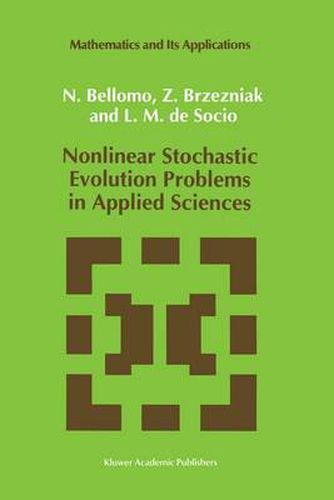Readings Newsletter
Become a Readings Member to make your shopping experience even easier.
Sign in or sign up for free!
You’re not far away from qualifying for FREE standard shipping within Australia
You’ve qualified for FREE standard shipping within Australia
The cart is loading…






This title is printed to order. This book may have been self-published. If so, we cannot guarantee the quality of the content. In the main most books will have gone through the editing process however some may not. We therefore suggest that you be aware of this before ordering this book. If in doubt check either the author or publisher’s details as we are unable to accept any returns unless they are faulty. Please contact us if you have any questions.
This volume deals with the analysis of nonlinear evolution problems described by partial differential equations hahving random or stochastic parameters. The emphasis throughout is on the actual determination of solutions, rather than on proving the existence of solutions, although mathematical proofs are given when this is necessary from an applications points of view. The content is divided into six chapters. Chapter 1 gives a general presentation of mathematical models in continuum mechanics and a description of the way in which problems are formulated. Chapter 2 deals with the problem of the evolution of an unconstrained system having random space-dependent initial conditions, but which is governed by a deterministic evolution equation. Chapter 3 deals with the initial-boundary value problem for equations with random initial and boundary conditions as well as with random parameters where the randomness is modelled by stochastic separable processes. Chapter 4 is devoted to the initial-boundary value problem for models with additional noise, which obey Ito-type partial differential equations. Chapter 5 is essentially devoted to the qualitative and quantitative analysis of the chaotic behaviour of systems in continuum physics. Chapter 6 provides indications on the solution of ill-posed and inverse problems of stochastic type and suggests guidelines for future research. The volume concludes with an Appendix which gives a brief presentation of the theory of stochastic processes. Examples, applications and case studies are given throughout the book and range from those involving simple stochasticity to stochastic ill-posed problems.
$9.00 standard shipping within Australia
FREE standard shipping within Australia for orders over $100.00
Express & International shipping calculated at checkout
This title is printed to order. This book may have been self-published. If so, we cannot guarantee the quality of the content. In the main most books will have gone through the editing process however some may not. We therefore suggest that you be aware of this before ordering this book. If in doubt check either the author or publisher’s details as we are unable to accept any returns unless they are faulty. Please contact us if you have any questions.
This volume deals with the analysis of nonlinear evolution problems described by partial differential equations hahving random or stochastic parameters. The emphasis throughout is on the actual determination of solutions, rather than on proving the existence of solutions, although mathematical proofs are given when this is necessary from an applications points of view. The content is divided into six chapters. Chapter 1 gives a general presentation of mathematical models in continuum mechanics and a description of the way in which problems are formulated. Chapter 2 deals with the problem of the evolution of an unconstrained system having random space-dependent initial conditions, but which is governed by a deterministic evolution equation. Chapter 3 deals with the initial-boundary value problem for equations with random initial and boundary conditions as well as with random parameters where the randomness is modelled by stochastic separable processes. Chapter 4 is devoted to the initial-boundary value problem for models with additional noise, which obey Ito-type partial differential equations. Chapter 5 is essentially devoted to the qualitative and quantitative analysis of the chaotic behaviour of systems in continuum physics. Chapter 6 provides indications on the solution of ill-posed and inverse problems of stochastic type and suggests guidelines for future research. The volume concludes with an Appendix which gives a brief presentation of the theory of stochastic processes. Examples, applications and case studies are given throughout the book and range from those involving simple stochasticity to stochastic ill-posed problems.